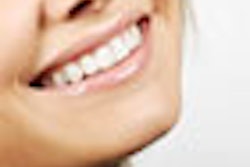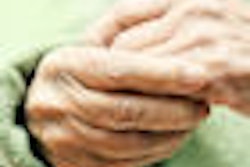
Next time you are torn between recommending in-office or at-home teeth whitening for your patients, consider this: A new study has found that both techniques produce satisfactory and long-lasting bleaching results (Journal of the American Dental Association, November 2010, Vol. 141:11, pp. 1357-1364).
This is the latest in a number of studies that have found that both techniques yield similar outcomes.
Earlier this year, researchers reported from the International Association for Dental Research (IADR) meeting in Barcelona, Spain, that a take-home whitening strip regimen may be as effective -- if not more so -- than a professional chairside, light-assisted whitening procedure. The take-home regimen resulted in similar tooth yellowness reduction and greater lightness improvement compared to the in-office method, the researchers concluded.
And a study in the September issue of Operative Dentistry found that at-home whitening produces similar results to in-office whitening at far less expense. However, the authors recommended more research into the tooth-color changes achieved with each approach, plus follow-up for months instead of weeks, to evaluate the full effects of each.
9-month randomized, controlled trial
That is what the authors of the new JADA study aimed to do. Lead author Luca Giachetti, MD, DMD, an assistant professor at the University of Florence dental school, told DrBicuspid.com that although several studies measured longitudinal changes in tooth color after whitening procedures, the literature does not provide sufficient information regarding the duration of the resultant bleaching.
“I would have expected that the at-home bleaching regimen would have provided a better result.”
— Edward Swift, DMD
Dr. Giachetti and his colleagues conducted their nine-month study to answer the common patient question about which of the two techniques will ensure the best results and last longer, he added.
"The aim of our randomized, controlled trial was to compare the whitening results of an at-home bleaching technique with those of an in-office technique and the longevity of the effects," the study authors wrote.
Their study involved a 14-day bleaching period, during which the first maxillary premolars of 17 participants (20-25 years of age) were bleached by means of either an at-home technique involving 10% carbamide peroxide or an in-office technique involving 38% hydrogen peroxide.
The authors recorded color variables -- lightness (L*), redness (a*), and yellowness (b*) -- by using a spectrophotometer at baseline and one week, one month, and nine months after bleaching. They also calculated a whiteness (W) index that was based on the distance of the color value in the color space from a nominal white point.
Among their findings:
- At the nine-month recall visit, comparison between the at home and the in-office techniques did not show significantly different values for L*, a*, b*, and W color variables.
- None of the participants experienced any adverse events related to the bleaching during the treatment period.
The two techniques demonstrated no clinically significant difference in bleaching efficacy, and both produced satisfactory and long-lasting bleaching results, the study authors concluded.
"Our study has conclusively shown that there is no difference in efficacy and longevity of the bleaching effect between the two bleaching techniques," Dr. Giachetti said.
Dentists can choose between either of the two bleaching techniques, he added, although the rapidity and safety with which the operator wants to achieve the desired bleaching effect may influence the choice of technique.
Edward Swift, DMD, the department chair of operative dentistry at the University of North Carolina at Chapel Hill School of Dentistry who has also done research on teeth whitening, said that although this study provides more evidence that tooth whitening works and can be accomplished using different methods, he was surprised at the findings.
"I would have expected that the at-home bleaching regimen would have provided a better result than the single in-office treatment at the final recall," he told DrBicuspid.com.
Most dentists prefer the at-home method because it is viewed as being more effective and requires the patient to be in the dental chair for much less time, Dr. Swift added. But if they choose to use this particular in-office method, based on the results of this study, they can feel confident that it works, he noted.
Copyright © 2010 DrBicuspid.com



















